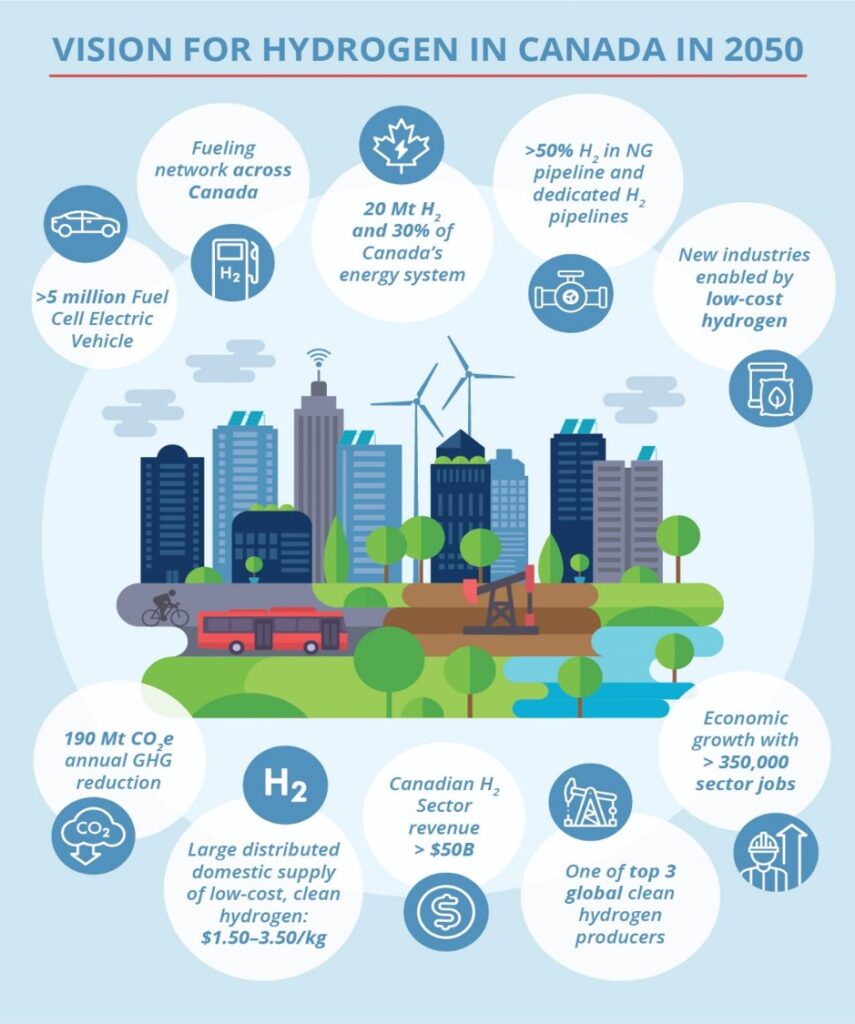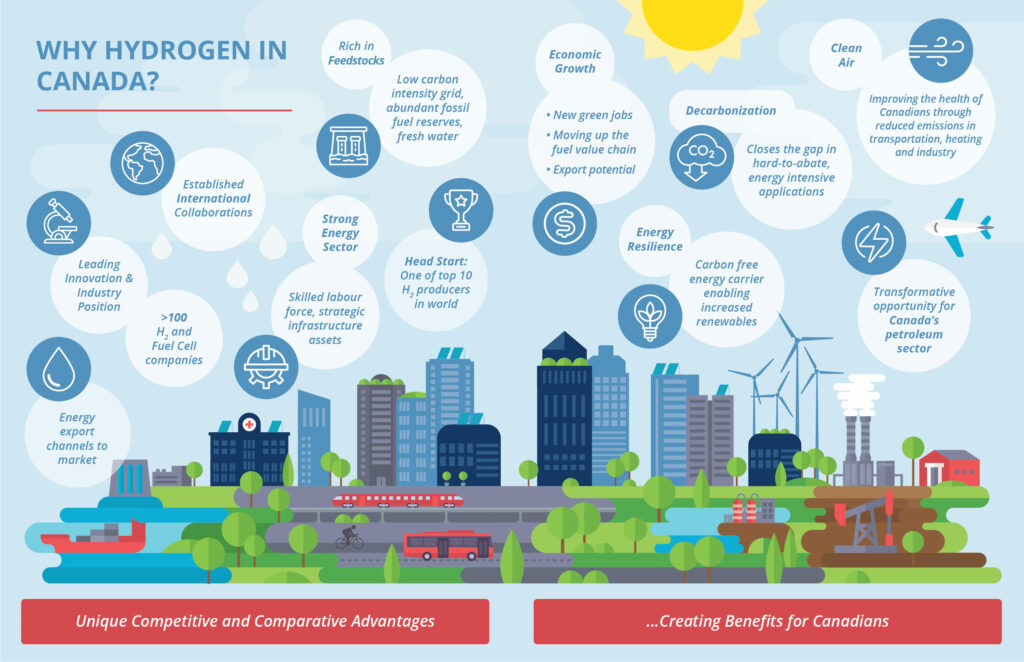The Hydrogen Strategy for Canada

Projects Sponsor
Lofty ambitions for hydrogen: Development and Implementation of the Hydrogen Strategy for Canada
For more than a century, Canada has been at the forefront of global hydrogen technology development, and yet domestic uptake has been limited. As countries around the world began to realize the essential role that hydrogen can play in contributing to climate objectives, it has become evident that Canada needs a cohesive plan to grow the domestic market, opening new economic opportunities for Canada’s world leading companies.
The Hydrogen Strategy for Canada was developed by Natural Resources Canada as a call to action. The goal is to provide a framework that encourages and empowers governments at all levels, the private sector, Indigenous businesses, and non-government organizations to seize the economic and environmental opportunities presented by hydrogen. At the same time, guidance and inspiration are also needed to help position Canada as the supplier of choice to the world, in both clean hydrogen and the technologies that use it.

The process of developing the Hydrogen Strategy began with a 360-degree scan of Canada’s past hydrogen efforts and the current state of play in the sector. Looking internationally, a high-level review of the growing global momentum of hydrogen was undertaken through engagement with the International Partnership for Hydrogen and Fuel Cells in the Economy (IPHE), and the International Energy Agency (IEA).
This initial review showed that while early strategic investments made by federal and provincial governments made Canada a world leader in the hydrogen deployment from the mid-1980s to the early 2000s, changing priorities meant that support had stalled.
Yes, Canadian companies continued to sell their products around the world, but the lack of a coordinated domestic market was beginning to place Canada’s leadership in jeopardy.
Propelled by a perfect storm of strong environmental policies, advancements in technology enabling hydrogen use in more diverse applications, and interest from governments and the private sector across the value chain, the global hydrogen market was evolving quickly. Canada risked being left behind.
Over the summer of 2020, working within the restrictions necessitated by COVID, the strategy team developed and delivered a series of fourteen targeted engagement sessions with more than fifteen-hundred participants, representing over two hundred and eighty different organizations. These sessions were essential in finalizing the strategy and exemplified the breadth of engagement and inclusivity necessary to ensure all areas and interests were represented in the Strategy.

Over the entire three years the small team worked diligently and tirelessly to foster strong collaboration across the Federal government. They also worked under extremely tight timelines and delivered bimonthly meetings with all levels of management, to ensure senior management was fully aware and supportive of the undertaking.
After the formal launch in December 2020, the team pivoted immediately to focus on implementing actions to begin to address some of the thirty-two recommendations included in the Strategy. Efforts included the development of a comprehensive Implementation Plan.
A Strategic Steering Committee––composed of more than thirty-five senior leaders from governments at all levels, the private sector, academia, and Indigenous businesses––provided high level guidance, followed progress, and prioritized activities.
This committee is supported by a Federal/Provincial/Territorial intergovernmental committee, delivered under the Energy and Mines Ministers Conference, as well as a dedicated Indigenous committee––focussed on the unique opportunities that hydrogen can present to Indigenous businesses and communities. Fourteen thematic, subject expert-led working groups focus on actions across all aspects of the hydrogen value chain, from production, to distribution, and various end uses.
The Hydrogen Strategy for Canada is a document of generational significance for Canada’s energy transition and path to being net-zero. Fully realized, this strategy will result in significant economic and environmental opportunities for Canadians from coast-to-coast-to-coast in 2050:
These potential economic benefits include 350,000 jobs in the hydrogen sector, over $50B in domestic revenue, and greater than $50B in export potential (providing a new market for Canada’s vast renewable electricity and conventional energy resources, enabling them to remain competitive in a net-zero future).
Up to one hundred and ninety megatonnes of greenhouse gas emissions reductions per year in 2050 (based on hydrogen providing up to 30% of Canada’s energy need) are to be had, much of it in hard to abate sectors of the economy.
Across the country, investments are being made, actions are being taken and results are coming in, all while Canadian companies continue to lead the world in technology development and commercial scale deployment
The Hydrogen Strategy exists to inspire the private sector, governments at all levels, Indigenous businesses, and academia to harness their resources, mutual interests, and combined efforts to be part of the change that hydrogen can bring. Because it’s change we can’t afford to go without.













